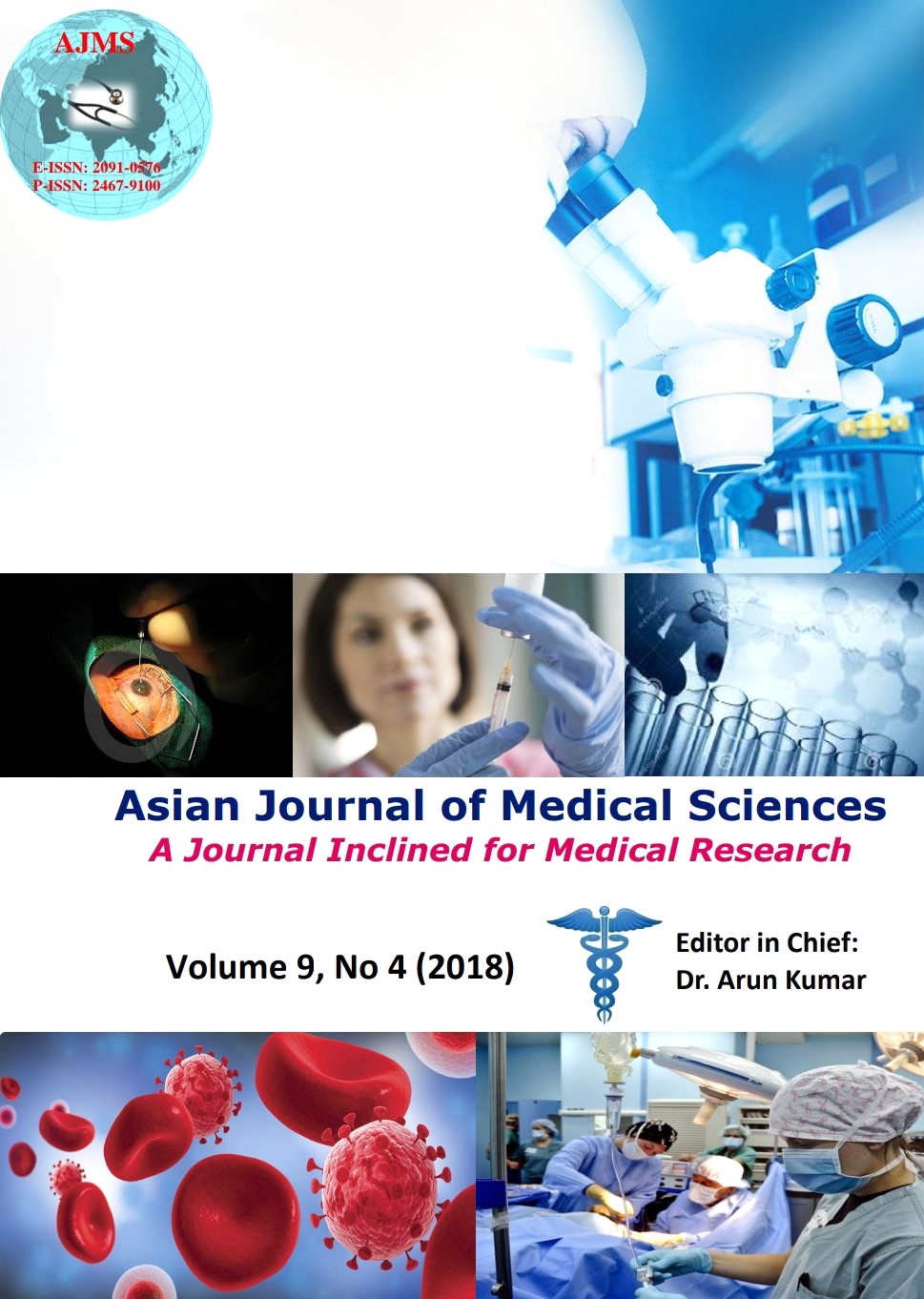A hospital based plain radiographic observational study of lumbosacral transitional vertebrae in the Nepalese population
Keywords:
Lumbarization, Lumbosacral transitional vertebra, Nepalese population, Plain radiographs, SacralizationAbstract
Background: Presence of lumbosacral transitional vertebra may lead to number of clinical consequences because of failure to correctly number the problematic vertebra and also has been associated with low back pain. Different studies done at different part of the world have shown wide range of prevalence of lumbosacral transitional vertebra.
Aims and Objective: This hospital based cross sectional observational study was undertaken to determine the prevalence of lumbosacral transitional vertebra among the Nepalese population.
Materials and Methods: Plain radiographs (anteroposterior and lateral views of lumbosacral spine and KUB radiographs) of 947 patients (646 with lumbosacral spine and 301 with KUB radiographs) done from August 2015 to July 2016 and meeting inclusion criteria were retrospectively analyzed for the presence of lumbosacral transitional vertebra.
Results: The overall prevalence of lumbosacral transitional vertebra was 14.7% with prevalence of 16.3% in patients with lumbosacral radiographs and 11.3% in patients with KUB radiographs and was statistically significant. Prevalence of sacralization was higher than lumbarization (11.9% Vs 2.7%). Lumbosacral transitional vertebra was more common in females than in males with Castellvi type I being most common and type IV least common.
Conclusion: The overall prevalence of lumbosacral transitional vertebra in the studied Nepalese population was 14.7% with significantly higher prevalence in patients with lumbosacral radiographs than with KUB radiographs.
Asian Journal of Medical Sciences Vol.9(4) 2018 46-50
Downloads
Downloads
Additional Files
Published
How to Cite
Issue
Section
License
Authors who publish with this journal agree to the following terms:
- The journal holds copyright and publishes the work under a Creative Commons CC-BY-NC license that permits use, distribution and reprduction in any medium, provided the original work is properly cited and is not used for commercial purposes. The journal should be recognised as the original publisher of this work.
- Authors are able to enter into separate, additional contractual arrangements for the non-exclusive distribution of the journal's published version of the work (e.g., post it to an institutional repository or publish it in a book), with an acknowledgement of its initial publication in this journal.
- Authors are permitted and encouraged to post their work online (e.g., in institutional repositories or on their website) prior to and during the submission process, as it can lead to productive exchanges, as well as earlier and greater citation of published work (See The Effect of Open Access).




